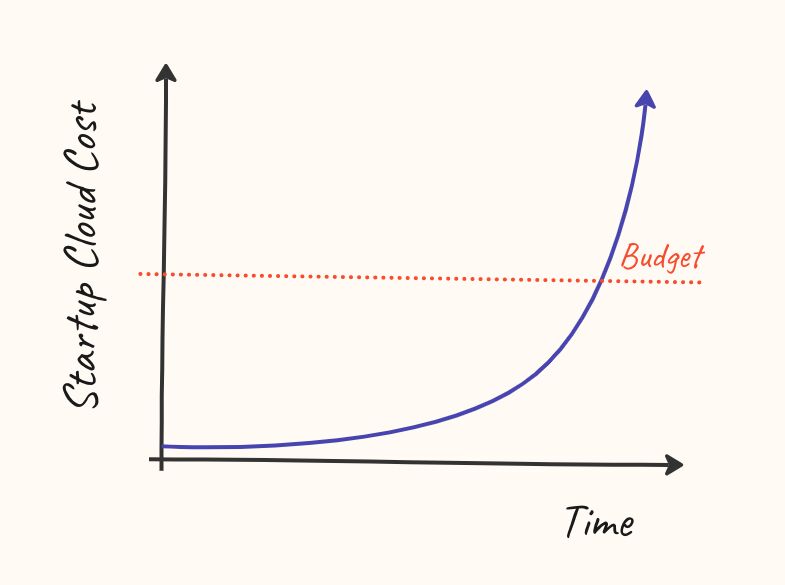Cloud cost optimization is a crucial step in running a successful startup, as every dollar saved on infrastructure can be reallocated to growing the business. Startups have distinct requirements when it comes to their cloud infrastructure, as they frequently have limited resources and a need to be agile and adapt quickly to market changes.
This post examines practical tips and strategies for optimizing cloud costs specifically for startups and how they differ from established companies.
The Importance of Cloud Cost Optimization for Startups
Startups operate in a unique environment compared to established companies. They often have limited resources, both in terms of funding and personnel, and need to adapt quickly to changes in the market. One of the biggest expenses for any company, including startups, is their infrastructure.
By optimizing cloud infrastructure costs, startups can free up resources and invest in other areas of the business such as product development or marketing.
The nature of startups and their limited resources, also mean that startups have less margin for error when it comes to managing their costs. Startups cannot afford to waste money on unnecessary resources or over-provision their infrastructure.

Furthermore, startups tend to have more flexible and dynamic workloads, which can change rapidly, depending on the success of their product or service. This means that startups need to be able to scale their infrastructure up and down quickly, in order to match their changing workloads.
Given all this, startups need to be more strategic in their approach to cloud cost optimization. They need to ensure that they are only paying for the resources that they need, and that they are taking advantage of all the cost-saving options available to them. By doing this, startups can free up resources and invest them in other areas of the business that can help drive growth.
Startups vs. Established Companies
Startups and established companies have different needs when it comes to their cloud infrastructure. The following are a few key ways in which their needs differ:
Flexibility and scalability
Startups are often building their product or service and require a high level of flexibility and scalability to adapt to market changes.
Established companies, on the other hand, already have a product or service and aim to optimize their existing infrastructure to save costs.
Level of resources
Startups have limited resources and need to be strategic in their approach to cloud cost optimization. This can include taking advantage of cost-saving options like reserved instances and spot instances, and automating their resource scaling.
Established companies have more resources and can afford to take a more comprehensive approach to cloud cost optimization. For example, established companies may be able to negotiate better rates with their cloud provider, or they may have the resources to build their own infrastructure management tools.
Workload predictability
Established companies have been around for longer and have likely already built a customer base, which means that their workloads are more predictable.
For startups, however, the situation is different. Startups are in the early stages of building their product or service, which means that their workloads are more dynamic and harder to predict.
It’s important to keep in mind that these are general differences and that every company is unique and may have different specific needs and resources. Startups should evaluate their own specific situation and adjust their approach accordingly.
Tips and Strategies for Optimizing Cloud Costs
- Right-size your instances:
One of the easiest ways to optimize cloud costs is to ensure that you are using the right size instances for your workloads. This means using larger instances for workloads that require more resources, and smaller instances for workloads that don’t.
To execute this tip, startups can first analyze their workloads and understand the resources required for each one of them, this can be done by monitoring the CPU, Memory, and storage utilization of each running instance, then match these requirements with the appropriate instance type from the cloud provider.
Startups can also use auto-scaling features to adjust the number of instances based on workload, or use tools like AWS Auto Scaling or GCP’s Autoscaler, these tools can help startups ensure that they are using the right size instances for their workloads and not overspending on unnecessary resources.
It’s important to note that this is an ongoing process, and startups should regularly review their instances and make adjustments as their workloads change. - Use reserved instances:
Another way to optimize cloud costs is to use reserved instances. Reserved instances allow startups to pay for their instances in advance, in exchange for a discounted hourly rate.
To execute this tip, Startups can research and compare the different reserved instance options available on their cloud provider and select the one that best fits their workloads and usage patterns.
Startups should also regularly review their usage patterns and adjust their reserved instances as needed. This can be done by using tools like AWS Cost Explorer or GCP’s Cost Management, these tools help startups to visualize and understand their usage patterns, and make informed decisions about their reserved instances. - Utilize spot instances:
Spot instances are a cost-effective option for startups that have workloads that can tolerate interruptions. Spot instances are instances that are available at a discounted rate, but can be terminated by the cloud provider at any time if their regular instances need to be used.
To execute this tip, Startups can take advantage of the cloud provider’s spot instance marketplace and bid for spare capacity instances when they are available.
Startups should also be aware that these instances can be terminated by the cloud provider at any time and prepare for this event, one way of doing this is to use tools like AWS EC2 Auto recovery or GCP’s Preemptible VM’s, these tools allow startups to automatically relaunch their workloads on a new instance. - Automate resource scaling:
Automating the scaling of resources can help startups ensure that they are only using the resources they need, and not overspending on unnecessary resources.
To execute this tip, startups can use tools like AWS Auto Scaling or GCP’s Autoscaler, to automate the scaling of their resources based on predefined rules and triggers. These tools can help startups ensure that the right number of resources are being used at the right time.
Startups can also use monitoring and alerting tools like AWS CloudWatch or GCP’s Stackdriver to trigger the scaling based on the performance metrics. - Monitor your usage and costs:
Monitoring and understanding your costs and usage patterns is an essential part of cloud cost optimization.
To execute this tip, startups can use the cost and usage monitoring tools provided by their cloud provider. For example, AWS Cost Explorer or GCP’s Cost Management, these tools allow startups to view their costs and usage patterns in a single dashboard, and provides them with detailed breakdowns of their spending across different services.
This can help startups identify areas where they may be overspending and take action to correct it.
Additionally, startups can also set budget alerts to receive notifications when their costs reach a certain threshold, this way they can take action early on to prevent overspending.
It’s important to keep in mind that cloud cost optimization is an ongoing process, so startups should be sure to review their costs and usage patterns regularly, and adjust their strategies as needed. This will help them stay on top of their costs and ensure that they are able to invest as much as possible in the growth of their business. Additionally, startups should also consider hiring a cloud specialist or consulting a third-party to audit their cloud costs and provide additional tips and recommendations.
It’s also important for startups to stay informed about new cost-saving options and features from their cloud provider, as they can change frequently and can provide an additional opportunities to optimize costs. Additionally, startups can also consider leveraging cloud cost optimization tools and services that are available in the market, as they can provide valuable insights and recommendations to optimize costs and manage cloud infrastructure more efficiently.
In conclusion, cloud cost optimization is essential for startups, which need to be agile and adapt quickly to market changes. Startups have unique needs when it comes to their cloud infrastructure, as they often have limited resources and need to be strategic in their approach to cloud cost optimization. By using the tips and strategies outlined in this post, such as right-sizing instances, using reserved and spot instances, automating resource scaling, and monitoring usage and costs, startups can effectively optimize their cloud costs and free up resources to invest in other areas of their business.



